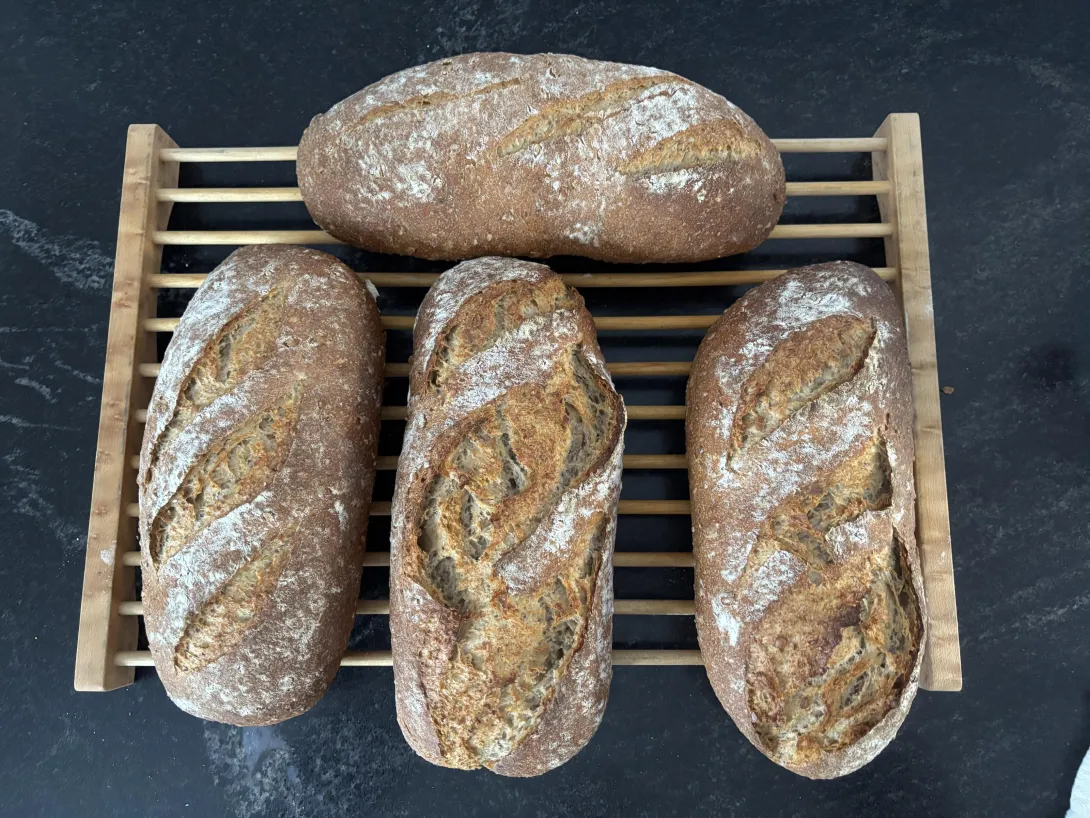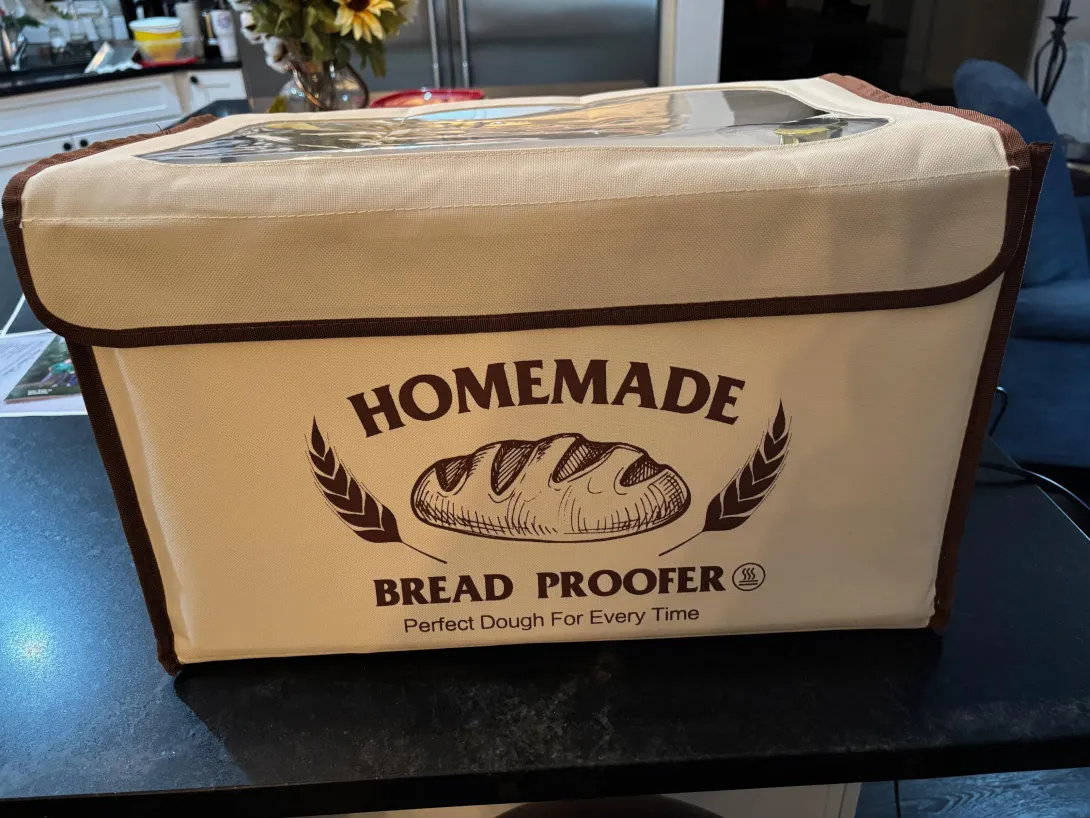pmccool's blog
Hamelman’s 5-Grain Sourdough w/Rye Sourdough

Or, How to Score Inconsistently. But, hey, looks aren’t everything.
Actually, I’m pretty happy with how this bake turned out. Fermentation is on point and baking went well with plenty of oven spring and good coloring. Shaping was mostly good with only one “bent” loaf.
Chocolate babka

I occasionally teach bread classes at our local library. This weekend's class featured chocolate babka. Lots of fun and some really good bread.
Paul
- Log in or register to post comments
- 11 comments
- View post
- pmccool's Blog
New dough proofer

My B&T proofer gave up the ghost a couple of months ago. It was one of their original models, and I think that it was purchased in 2012. The new B&T proofers have been, um, upgraded and can now function as slow cookers, too. The price point is around $250 US.
Sourdough Multigrain Infinity Bread

It seemed like a good time to make a multigrain sourdough bread, so I reached back to the Infinity Bread template from the Community Bake of the same name.
The flour components for this bake included bread flour (34%), whole wheat flour (33%), whole barley flour (20%), and whole rye flour (13%) totaling 1000g.
A blast from the past
My wife was going through the cabinets last week and hauled out two packets of dried starter. One was a survivor from our move from South Africa to the US, dating back to October 2011. So, just a couple of months away from being 14 years old. Mind you, this has received no special treatment, having been tucked away in one cabinet or another at room temperature. It has also survived a second move in 2020 when I retired and we moved from Kansas back to Michigan.
Milk Rye from The Rye Baker

We returned home a couple of weeks ago from a trip to Myrtle Beach and needed some bread. After a bit of consideration, I opened The Rye Baker and began thumbing through it. Several breads looked appealing and I eventually selected the Milk Rye. It’s one that I haven’t made previously. The bread is about 60:40 rye:wheat (medium rye flour and bread flour). My deviations were to substitute whole rye flour that I milled in place of the medium rye flour, 2% milk for the whole milk, and ADY for the IDY.
- Log in or register to post comments
- 14 comments
- View post
- pmccool's Blog



